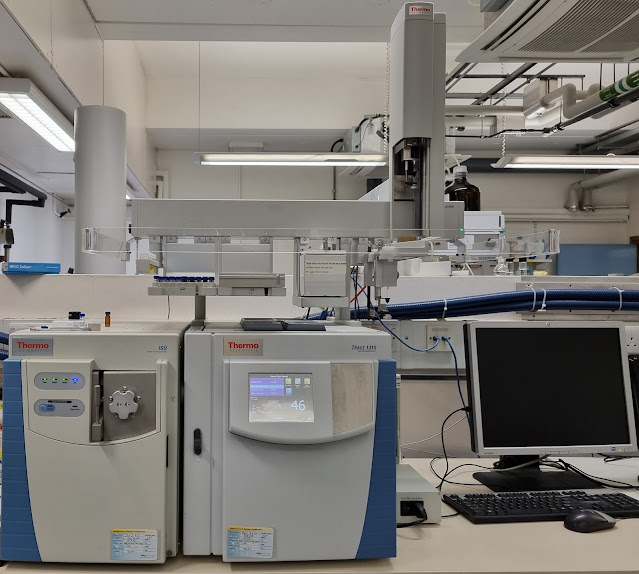Series 5 - Research Insights

5# The findings After a month of research, I successfully obtained the ideal method set-up for separating eight amines and the Active Pharmaceutical Ingredient (Ibuprofen) compound. All mass spectrum I obtained has more than a 50% probability of similarity with the standard, according to the National Institute of Standards and Technology (NIST) Library software. Figure 1. Peak Chromatogram of Dibutylamine (generated with Thermo Xcalibur™ 2.2 SP1.48) Figure 2. Mass Spectrum of Dibutylamine (generated with Thermo Xcalibur™ 2.2 SP1.48) Figure 3. NIST Mass Spectrum Search 2.0 Library Similarity Result for Dibutylamine Even though I still have a long way to run, the progress I have achieved so far may allow me to deliver some insights and findings: 1) D ifference in boiling point is the key to enhancing the separation. After identifying each analyte's boiling point, we will be able to optimise the oven temperature appropriately. Figure 4. Oven Temperature Se...



